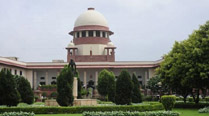Opinion Error and trial
The court wants strict standards for investigators and prosecutors, but its solution is blunt.

 A Supreme Court bench should be wary of the reflexive assumption that every case that fails hinges on the failures of the police or prosecution.
A Supreme Court bench should be wary of the reflexive assumption that every case that fails hinges on the failures of the police or prosecution.
Anguished at the lack of evidence forcing it to acquit a man accused of raping and murdering a child, the Supreme Court has ordered a drastic corrective. It has asked all state governments to set up a standing committee to examine each acquittal, and identify where the police and prosecution failed. An acquittal, it reasoned, means that either the police and prosecution have failed to present convincing evidence and press their case or that the accused was wrongfully put in the dock. The process should, therefore, be examined carefully and the lapses, deliberate or inadvertent, should be identified. If there is serious negligence or culpable misdemeanour, the officer should face departmental action, the court said. It also asked state governments to evolve a procedure by which prosecuting agencies only take on cases that hold up, and order further investigations if necessary to put together a credible case. While the court’s motives are commendable in attempting to institute a review of our criminal justice system and fix greater accountability on police and prosecution, its solution is too sweeping to be useful. It also treads on the state government’s turf.
The court’s presumptions are also debatable. A Supreme Court bench should be wary of the reflexive assumption that every case that fails hinges on the failures of the police or prosecution and therefore calls for a departmental inquiry — just as the motives of the judge are not questioned if a trial court verdict is overturned later. If there are glaring lapses in the gathering and presenting of evidence, the trial court often points them out and a departmental inquiry is initiated within the police. Mandating this for every acquittal is unnecessary, and would place heavy strain upon an already overburdened system.
Given the judgement calls inherent in crime scene investigations, eyewitness evidence, interrogation as well as in the prosecution, it may prove to be difficult to pin the blame for errors and make the distinction between negligence and malice. What’s more, the system’s real weaknesses have been made clear by the Supreme Court itself, in the Prakash Singh judgment of 2006, which laid out a new plan for operational responsibility and accountability. And yet, the police across states remains responsible for an array of tasks ranging from detective work and maintaining order to bandobast duties. Without a separate, trained investigative wing, is it any wonder that there are persistent flaws in the quality of investigations? The court should prod the government to comply with its vision of comprehensive police reform, instead of creating workarounds like these proposed panels.



